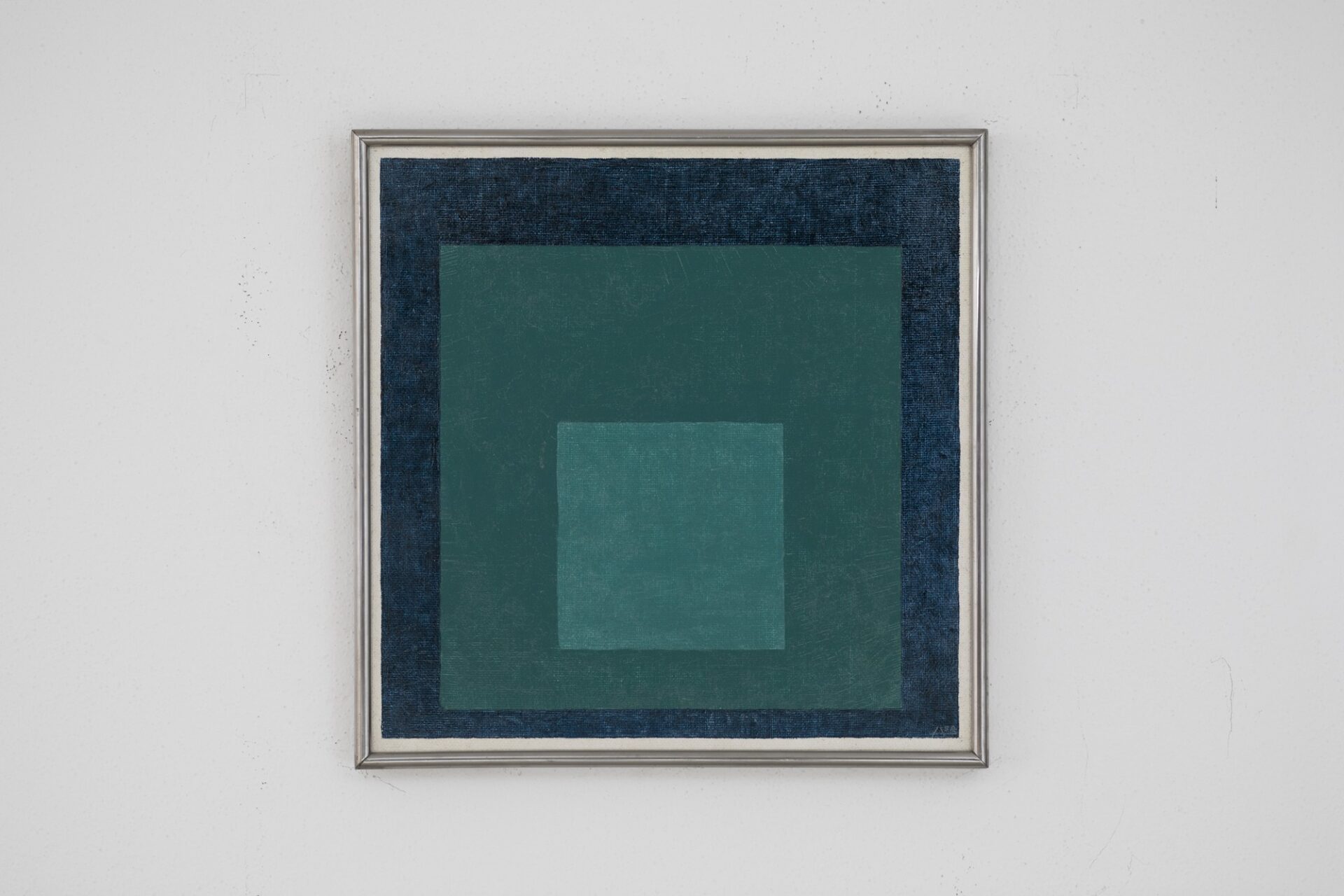Josef Albers was born in Bottrop, Germany, and studied art in Essen and Munich before entering the Bauhaus in Weimar in 1920; he later taught at the Bauhaus in Dessau. In 1933, he emigrated to the United States, becoming the head of the art department at Black Mountain College, near Asheville, North Carolina. Albers had his first solo exhibition in New York in 1936, at the New Art Circle gallery, and a retrospective of his work was held at the Museum of Modern Art, New York, in 1971. “I’ve seen a lot of paintings by Albers,” wrote Donald Judd, “often singly, over half the world. They are always amazingly beautiful.”1
In the catalogue for the German artist’s exhibition of prints, photographs, and drawings at the Chinati Foundation in 1991, Judd described this particular painting at length:
I have a small painting, eighteen by eighteen inches, Homage to the Square, 1958, which is three concentric squares, which is really one square surrounded by a square band, itself surrounded by a square band. . . . The identity of the color is not separable from the expanse of the areas or from the texture or transparency. The intensity of the color varies according to the expanse of the areas. And, famously, the color varies according to the colors surrounding it and it also has an identity as a changed color. . . . The painting is one single whole. . . . The scheme of squares and the corresponding change of color provide changes in proportion, which is unused in recent art, and which I am interested in in my own work.2
